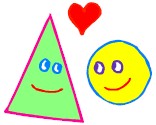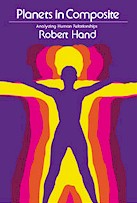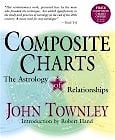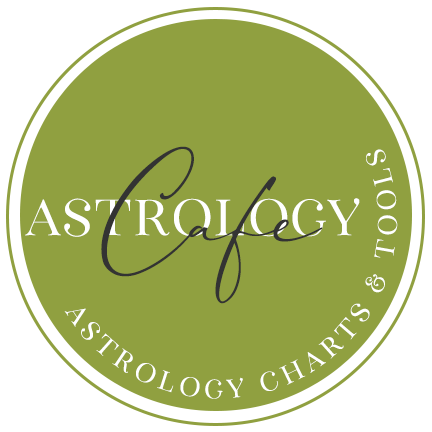Synastry Books Compared
synastry & Relationship Astrology Books – comparison
Techniques for Determining Compatibility
 On our main Synastry page, we offered an overview of considerations for compatibility. On our Compatibility Analysis page, we offered a weighting system for various interchart aspects and positions. On our More on Synastry page, we explored more synastry topics. On our House Overlays page, we examined person A’s planets in person B’s houses, and vice versa.
On our main Synastry page, we offered an overview of considerations for compatibility. On our Compatibility Analysis page, we offered a weighting system for various interchart aspects and positions. On our More on Synastry page, we explored more synastry topics. On our House Overlays page, we examined person A’s planets in person B’s houses, and vice versa.
On this page, we explore books on Relationship Astrology.
There are quite a few books available that explore synastry, composite charts, and relationship astrology in general. Here, I share with you my favorite books on the subject, and tell you exactly why they have earned top placement on my bookshelf. My list here is, of course, based on my personal preferences and is not all-inclusive.
 Relationship Analysis (Astrology A Language of Life Volume IV) Perhaps the most extensive and organized book on Relationship Astrology is Relationship Analysis by Robert P. Blaschke. This book is outstanding. For anyone interested in exploring relationship astrology more deeply, this is a must-have book. It’s not a cookbook in that it doesn’t offer interpretations of each synastry aspect or composite position, for example, but it explores the topic of relationship astrology in depth.
Relationship Analysis (Astrology A Language of Life Volume IV) Perhaps the most extensive and organized book on Relationship Astrology is Relationship Analysis by Robert P. Blaschke. This book is outstanding. For anyone interested in exploring relationship astrology more deeply, this is a must-have book. It’s not a cookbook in that it doesn’t offer interpretations of each synastry aspect or composite position, for example, but it explores the topic of relationship astrology in depth.
Used in conjunction with other cookbook-style books (such as Planets in Composite: Analyzing Human Relationships (The Planet Series) by Robert Hand, Planets in Synastry: Astrological Patterns of Relationships (The Planet Series) by EW Neville, and Synastry Techniques (The Only Way to Learn About Relationships, Volume 5) by March and McEvers), this book is invaluable.
Relationship Analysis is Volume IV in the Blaschke’s Astrology a Language of Life series of books. This gem of a book has only recently been published. Although I haven’t read it from cover to cover just yet, I’ve read enough of it to know it is truly a wonderful work. The author discusses the theory of relationship astrology, interchart aspects, the composite chart, the Davison chart, and future considerations. He covers broad subject matter, including such things as midpoints, progressed composite and Davison charts, synastric progressions, Solar Returns, the Part of Marriage, Sabian symbols, and more.
He goes into detail on the topic of electing a date of marriage, the concept of the “shadow”, and a topic that isn’t covered frequently: “mirror degree synastry” or antiscia synastry. There are more topics covered than I can list here. The author also helps readers prepare for a consultation and offers a Relationship Analysis Worksheet that serves as an excellent means for organizing one’s findings.
Note that the author finds both the composite chart and the Davison relationship chart important. The Davison Time-Space Relationship chart is similar to the composite chart, except that it is drawn for the date, place, and time that is exactly midway between the individuals’ birth times and places. Composite charts and Davison Relationship charts often look similar. However, composite charts are derived by taking the mathematical midpoint between each person’s planets and points. Davison charts, on the other hand, have “time and space” reality–these charts are drawn for real points in time and space, and include phenomena (such as retrogrades and eclipses) that composite charts do not.
This book is outstanding, and a must-own for those with a serious interest in relationship astrology.
For more information, reviews, or to buy, click here: Relationship Analysis (affiliate link)
 Skymates: Love, Sex, and Evolutionary Astrology by Steven and Jodie Forrest The intuitive, warm, and personable style of the Forrests’ writing is here in Skymates, an updated and expanded version of this classic synastry book. Readers will come away with a more clear and deeper understanding of synastry. The authors explore the “arc of intimacy” (the 4th to 8th houses), interaspects, and a number of intriguing topics. Examples are offered, and a helpful “Putting It All Together” chapter. The writing style is incredibly unique–the authors’ intuitive understanding of how people “work” makes me feel all warm and cozy.
Skymates: Love, Sex, and Evolutionary Astrology by Steven and Jodie Forrest The intuitive, warm, and personable style of the Forrests’ writing is here in Skymates, an updated and expanded version of this classic synastry book. Readers will come away with a more clear and deeper understanding of synastry. The authors explore the “arc of intimacy” (the 4th to 8th houses), interaspects, and a number of intriguing topics. Examples are offered, and a helpful “Putting It All Together” chapter. The writing style is incredibly unique–the authors’ intuitive understanding of how people “work” makes me feel all warm and cozy.
For more information, reviews, or to buy, click here: Skymates: Love, Sex and Evolutionary Astrology (affiliate link)
 Love Formulas-2 by Nance McCullough This is the type of book that packs a lot of practical, to-the-point tips about relationship astrology into its pages.
Love Formulas-2 by Nance McCullough This is the type of book that packs a lot of practical, to-the-point tips about relationship astrology into its pages.
There are times when you just want to find useful guidelines for making your compatibility analyses. Love Formulas-2 lists such things as good and very good synastry, as well as bad and very bad synastry.
The author explores such topics as the role of elements and quadruplicities in relationships, composites and progressed composites, choosing a good day to marry, Arabic parts and relationships, and a whole lot more. She even throws in some numerology. This is not a cookbook-style synastry book. Rather, Love Formulas-2 offers plenty of guidelines and tips for analyzing compatibility. The author shows what works and what doesn’t, and supports her theories with numerous examples (intriguing ones!).
There are plenty of interesting tidbits and examples to be found in the book. At times it’s a little hard to follow, simply because there’s a lot of information to digest, so it is probably not ideal for those who prefer to focus on the basics only. However, I love this book. It’s full of interesting and practical information, and explores topics that other books don’t cover. This book is best for those who have a firm grasp on synastry basics, and who want to learn more.
For more information, reviews, or to buy, click here: Love Formulas-2 (affiliate link)
 Planets in Composite by Robert Hand This slightly older book, dedicated to interpreting the composite chart, is a very useful reference. Besides introductory chapters that give an overview of the whole process of casting and reading the composite chart (the chart of a relationship), the book offers case studies as well as delineations of each luminary and planet in the houses and in aspect. The Moon’s Nodes, and their special meaning in the composite chart, get a whole chapter to themselves, too. If you frequent the Astrodienst site, you’ll find that their interpretations of the composite chart are pulled from this excellent work. The interpretations given in Planets in Composite are insightful; they’re also decidedly realistic and practical. Some of them can even sting, which is probably a good thing.
Planets in Composite by Robert Hand This slightly older book, dedicated to interpreting the composite chart, is a very useful reference. Besides introductory chapters that give an overview of the whole process of casting and reading the composite chart (the chart of a relationship), the book offers case studies as well as delineations of each luminary and planet in the houses and in aspect. The Moon’s Nodes, and their special meaning in the composite chart, get a whole chapter to themselves, too. If you frequent the Astrodienst site, you’ll find that their interpretations of the composite chart are pulled from this excellent work. The interpretations given in Planets in Composite are insightful; they’re also decidedly realistic and practical. Some of them can even sting, which is probably a good thing.
For more information, reviews, or to buy, click here: Planets in Composite: Analyzing Human Relationships (The Planet Series) (affiliate link)

Composite Charts: The Astrology of Relationships by John Townley is another comprehensive composite chart manual. This book is written by John Townley who is credited with the invention of the wonderful “composite” technique. This book interprets the composite planets and nodes in aspect, house, and sign. Both this book and Robert Hand’s Planets in Composite (above) are excellent reads, and they complement each other well–instead of overlapping. Townley’s writing style is a little more conversational than Hand’s. Composite planets in the signs are covered in this work and not in Planets in Composite. I find both books quite useful. If I had to make a choice between these two books when recommending a composite chart manual to a student of astrology, however, I would choose Planets in Composite, but if you can afford both, do so.
For more information, reviews, or to buy, click here: Composite Charts: The Astrology of Relationships (affiliate link)
 Synastry by Ronald Davison This is an older text that any student of relationship astrology should enjoy. Davison interprets house overlays and interaspects. He is the one who invented the Davison Time & Space Relationship charts that I mentioned above, and he devotes a chapter to this subject. Although the author’s writing style is clear, he uses “he” and “she” pronouns “as a matter of convenience”, and it can sometimes confuse the heck out of me. In the House Interchanges chapter, for example, each interpretation is taken as “When the man’s Sun falls on the woman’s Ascendant”, and then “he” and “she” as well as “his” and “her” are used throughout the interpretation. This reads well when the sex is correct for the couple you are looking up, but it takes quite an adjustment of thinking when it is the reverse (when the woman’s Sun falls on the man’s Ascendant, for example). Despite this, (and it could just be my brain that has a hard time with it!) I love the book and recommend it.
Synastry by Ronald Davison This is an older text that any student of relationship astrology should enjoy. Davison interprets house overlays and interaspects. He is the one who invented the Davison Time & Space Relationship charts that I mentioned above, and he devotes a chapter to this subject. Although the author’s writing style is clear, he uses “he” and “she” pronouns “as a matter of convenience”, and it can sometimes confuse the heck out of me. In the House Interchanges chapter, for example, each interpretation is taken as “When the man’s Sun falls on the woman’s Ascendant”, and then “he” and “she” as well as “his” and “her” are used throughout the interpretation. This reads well when the sex is correct for the couple you are looking up, but it takes quite an adjustment of thinking when it is the reverse (when the woman’s Sun falls on the man’s Ascendant, for example). Despite this, (and it could just be my brain that has a hard time with it!) I love the book and recommend it.
For more information, reviews, or to buy, click here: Synastry: Understanding Human Relations Through Astrology (affiliate link)
 Planets in Synastry by E.W. Neville is a text that I fell in love with when I first acquired it in the early 1990’s, but over the years I have had a love-hate relationship with it. The reason? I find some of his analyses incredibly insightful, and others somewhat questionable. I remember becoming frustrated with Robert Hand’s Planets in Composite because I found his interpretations of planets found in the 6th and 12th house in relationship analysis a little harsh. Mind you, I have come to learn that Hand’s interpretations were not off the mark. Planets in Synastry is similar in its treatment of the 4th house, for example. I still do not understand why this author has such negative interpretations of this house in synastry. As a result, I recommend this work to students of astrology who already know a lot about relationship astrology, but not to those who are just learning. This book is certainly not as “light” of a read as some other books listed here, but it contains some highly interesting insights. The author interprets aspects in synastry as well as in the composite chart, and explores house overlays.
Planets in Synastry by E.W. Neville is a text that I fell in love with when I first acquired it in the early 1990’s, but over the years I have had a love-hate relationship with it. The reason? I find some of his analyses incredibly insightful, and others somewhat questionable. I remember becoming frustrated with Robert Hand’s Planets in Composite because I found his interpretations of planets found in the 6th and 12th house in relationship analysis a little harsh. Mind you, I have come to learn that Hand’s interpretations were not off the mark. Planets in Synastry is similar in its treatment of the 4th house, for example. I still do not understand why this author has such negative interpretations of this house in synastry. As a result, I recommend this work to students of astrology who already know a lot about relationship astrology, but not to those who are just learning. This book is certainly not as “light” of a read as some other books listed here, but it contains some highly interesting insights. The author interprets aspects in synastry as well as in the composite chart, and explores house overlays.
For more information, reviews, or to buy, click here: Planets in Synastry: Astrological Patterns of Relationships (The Planet Series) (affiliate link)
 Karmic Relationships by Martin Schulman This is an older book that is devoted to interchart aspects. The author has a different paragraph and interpretation for each interaspect for males and females. For example, there is a paragraph for Male Sun Trine Female Uranus and one for Female Sun Trine Male Uranus. The interpretations are short and concise. This isn’t a very comprehensive work, but it’s handy.
Karmic Relationships by Martin Schulman This is an older book that is devoted to interchart aspects. The author has a different paragraph and interpretation for each interaspect for males and females. For example, there is a paragraph for Male Sun Trine Female Uranus and one for Female Sun Trine Male Uranus. The interpretations are short and concise. This isn’t a very comprehensive work, but it’s handy.
For more information, reviews, or to buy, click here: Karmic Relationships (affiliate link)
Next: Karma and Relationships
Back to Astrology Book Reviews











